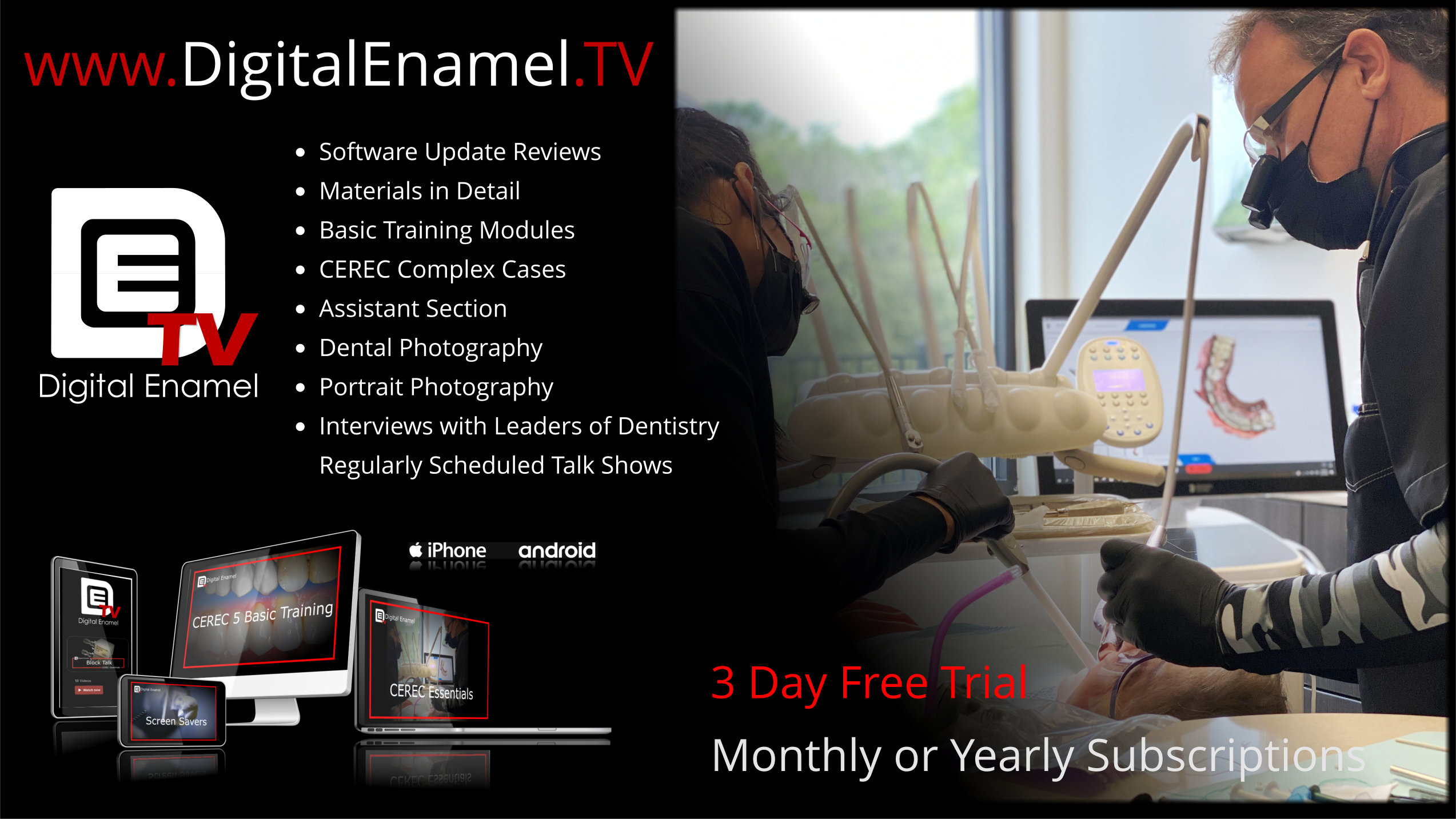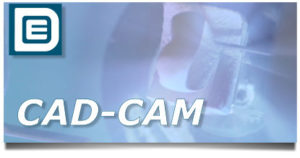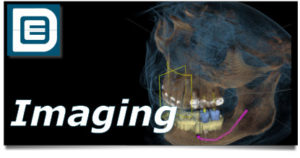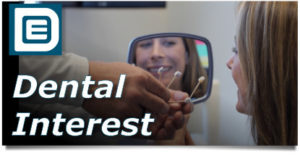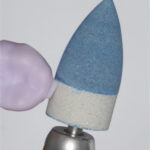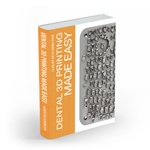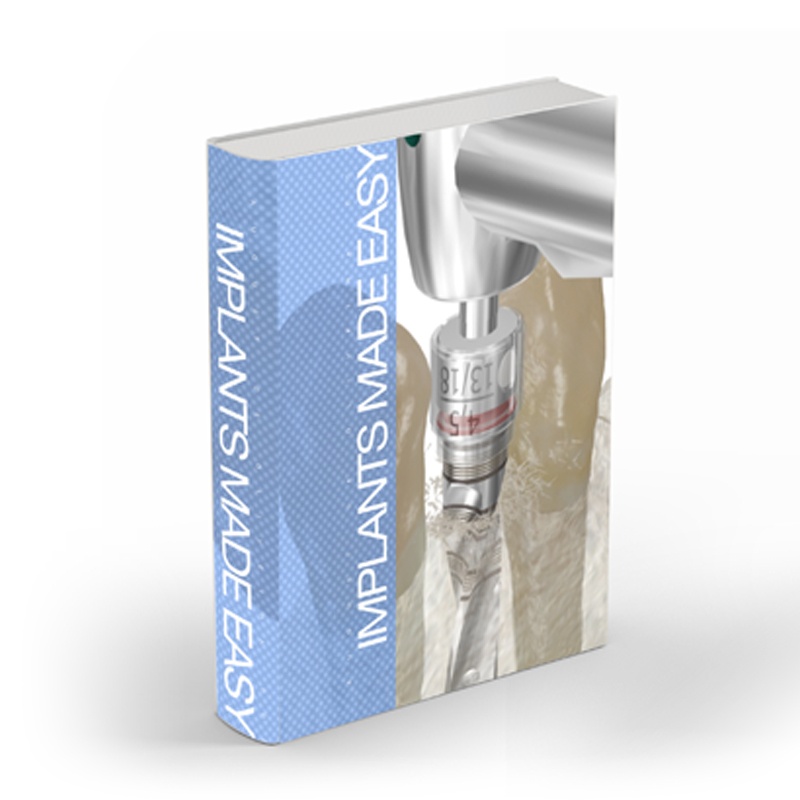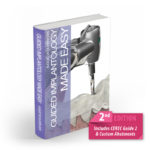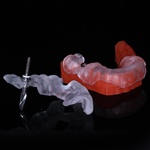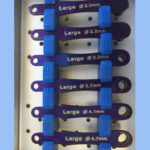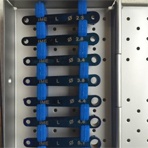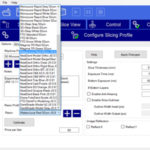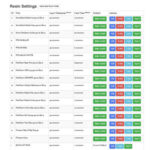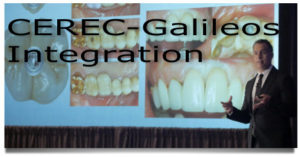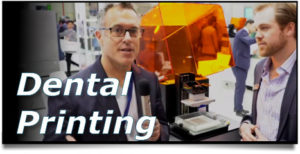(This is the 3rd part of a series relating to the struggles of dentists. Part 1 is here. Part 2 is here. Part 4 will discuss the Burnout that occurs in dentistry.)
Years ago, I remember talking to a friend about his childhood and how he hated the way his father treated the family. He stated his father was an alcoholic and was emotionally and physically abusive to the family. They lived in a constant state of fear because they didn’t know what dad was going to be like from day to day. My friend adamantly told me he definitely would never be an alcoholic like his father.
As fate would have it, my friend became depressed and developed alcoholism while losing his wife to divorce. One thing I remember vividly was when he said he never saw any of this coming. It reminds me of the story of the frog that is put into a cold pot of water on an oven while the temperature increases incrementally over time. The frog doesn’t sense what is happening until he’s cooked sort of like my friend! The same is true of the person who swears he will “never become an alcoholic”. Sometimes one just can’t see detrimental things happening because it insidiously comes upon you.
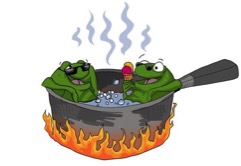
Dentists are familiar with daily stressors and anxieties. Dentists who are unable to keep life in balance may develop panic attacks, generalized anxiety disorders, depression, burnout, and suicidal ideation, often times progressing to chemical (prescription drugs, illicit drugs, and alcohol) and behavioral (gambling, food, internet pornography, shopping, etc.) abuse and addictions. We know factors contributing to addiction include genetics, biochemical and cellular changes in the mid-brain, environmental/behavioral factors, and stress.
“…contributing to addiction include genetics, biochemical and cellular changes in the mid-brain, environmental/behavioral factors, and stress.”
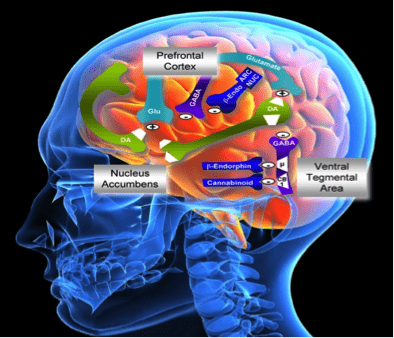
 In this section, we will look into more detail about what unique personality traits and types dentists possess and how they relate to our potential for addiction and other addictive behaviors. As mentioned previously, the Myers-Briggs Type Indicator (MBTI) is an introspective self-report questionnaire designed to indicate psychological preferences in how people perceive the world and make decisions. It can give an indication as to our preferences of things we like to do or where we want to do it. MTBI, however, is not a psychological test of dysfunction nor can it diagnose.
In this section, we will look into more detail about what unique personality traits and types dentists possess and how they relate to our potential for addiction and other addictive behaviors. As mentioned previously, the Myers-Briggs Type Indicator (MBTI) is an introspective self-report questionnaire designed to indicate psychological preferences in how people perceive the world and make decisions. It can give an indication as to our preferences of things we like to do or where we want to do it. MTBI, however, is not a psychological test of dysfunction nor can it diagnose.
The full description for the Myers & Briggs Type Indicator is found here.
Type Implications and Addiction

Introverts:
• Report drinking/using to overcome shyness, anxiety and lack of confidence in social skills.
• Become aware of the pain of the dysfunctionality sooner than extroverts.
• Significant correlation found between introversion and heroin addiction.
Extroverts:
• May take longer to admit alcoholic problems since society condones and
encourages drinking.
Perceivers:
• More likely to experiment, triggering addiction more frequently.
• The need to play may lead to a deeper and more extended period of addiction.
Sensors:
• Sensors in the “Grip” become negative, pessimistic, depressed and impulsive. (The grip response occurs when one is at low ebb, experiencing fatigue, physical or psychological stress, illness and life transitions, often experienced during midlife. When one is challenged, a sensor becomes defensive and reactive and makes decisions that will not be in their best interest. This “in the grip” response is an inferior personality function).

Myer’s-Briggs Personality Types Associated With Addiction
(Seven different research studies)
ISTJ*
ISTP*
ISFP*
ESTJ
ESFJ
(The asterisk (*) indicates the MBTI Type that consistently appear in addiction).
Possibly Predictive Of Substance Abuse
ISTJ
ISFJ
In the addicted population, studies indicate that ISTJ’s and ISFJ’s are 49% more highly represented than expected (compared to general population).

Drug Choice and Type
• Judgers lean toward legal drugs.
• Perceivers lean toward illegal drugs.
• SJ’s reduce stress by using opiates/opioids.
• SP’s need excitement and are more likely to use psychedelics.
• High sensation seekers score high on extroversion.
• Low sensation seekers score high on introversion.
Addictions and Personality Types
Drug Addiction: INTP
These people have sensation seeking personality traits that stay away from the predictability and boring (P types) as well as the open-minded to experimenting types (N types). These people are more prone to drug addiction.
Food Addiction (Compulsive Overeating): ISFP
These go through stages where they feel unworthy of who they are (especially teenagers) but are fulfilled with the immediate sensations they feel (S) often forgetting to justify to themselves why they shouldn’t be eating so much.
Gambling Addiction: ESTP
Results from risky, compulsive personality, and an increased chance of antisocial personality disorders that accurately describe the gambling addict. Sensing (S) is about the moment, hopeful thinking and spontaneous moment thinking, which are concerned with endless opportunities. Thinking (T) is primarily concerned with numbers and that “the next one will be the big win”. This introverted, compulsive thinking justifies to the addict that “they can win”.
Computer Addiction (Internet, Video Games): INTP
Results from obsessive use of computers, smart phones, pads, etc., that interfere with daily functioning, including risking loss of career goals, educational objectives, and personal relationships with lack of social interaction. Introverts (I) are most likely to lose social interaction due to computer addiction, iNtuitive (N) types lose practical elements of their life, Thinking (T) types can easily forget about personal relationships, and Perceiving (P) types may lose track of time and lose perspective on goals and objectives. Furthermore, this supports NT’s love for imagination and investment into one particular topic.
Sexual Addiction: ESTP
Results in obsessive pornography use characterized by a progressive intimacy disorder with compulsive sexual thoughts and acts. Interestingly, sexual addiction can be reduced by self-knowledge, self-awareness, and willpower. Thus, Sensing (S) are most likely to seek immediate sensations, including seeking out sexual adventures, sexual materials, and getting in trouble with the law. Sexual addiction is more commonly found in men who are likely to be Thinking (T) types. Finally, ST’s are “doers” who are regarded as the most impulsive, thrill seeking type.
Depression and Personality Types

Depression and MBTI types show a preponderance of introverts and feelers among a depressed population (74% introverts, 84% feelers) according to David Janowsky, MD of the University of North Carolina at Chapel Hill, et.al. (2002, World Journal of Biological Psychiatry).
In this study, ISFP’s, INFP’s, ISFJ’s, and ESFJ’s were over-represented while INTP’s, ESTP’s, and ENTP’s were under-represented. In 1999 Bipolar Disorders magazine, Dr. Janowsky found bipolar patients to be more extroverted and perceiving than those with unipolar depression.
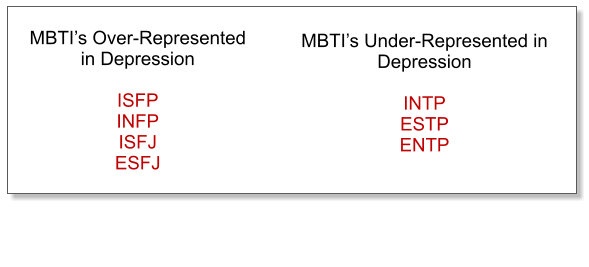
In dentistry, isolation is our big enemy! Depression and isolation that derives from any type of mental illness strongly influences our tendency to seek comfort in our own inner world. While self-reflecting and isolation can be valuable for intra-personal growth, it can also be detrimental long term which may lead one into an abyss of depression.
In some ways it’s ironic that the majority of our clinical time is spent looking through loops or a microscope where we are “isolated” in our own world. In that small field of view we have control of the environment, we know what needs to be done to fix the problem, and we know how to do it!
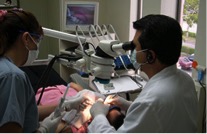
Clinical experience and competence is to be treasured and valued but not at the expense of our thinking that our way is the only way! I can remember when I entered my general practice residency how proud and confident I was of my dental educational background. I was so confidant and determined that what I was taught in dental school was the best and really only way to do dentistry! Little did I realize that I was quickly distancing myself from others and the opportunity to possibly learn another way to “skin a cat”. Looking back, I was really “isolating” myself not only from others by my narcissistic and self-centered ideas but robbing myself from expanding my clinical expertise by listening to others. I quickly found that my attitude was hampering me from expanding my clinical skills.

Dr. Janowsky, a psychiatrist (an INFP and hermit himself) explains, “I made deliberate efforts to get out amongst people, which no doubt reduced my risk of depression, and had the unexpected result of helping me find the kind of ease within myself that had eluded me my whole life. Getting out amongst people back then was like plunging into ice water. It’s much easier now, but the water is still cold.”

Dentists that don’t confront and address isolation, depression, and professional burnout can lead to a feeling of no-return and possibly eventual suicidal ideation.
Another study by Dr Janowsky MD, et.al., (2000, Journal of Psychiatric Research) found that 84 percent of the 64 suicidal patients examined were introverts. This observation suggests that social isolation may be a potential risk factor for suicide. Furthermore, Dr Janowsky (2001, Current Psychiatric Reports) cites various studies to support the proposition that increased introversion can lead to the persistence of depressive symptoms and a lack of remission.

Conversely, extroversion can improve outcomes. The obvious antidote is to remain engaged and involved in our families, society, and profession. While this is easier said than done knowing the nature of depression, one must develop a purpose in life that involves personal goals, community involvement through volunteering, and most importantly creating a relationship with an “accountability partner” or mentor (friend, another dentist, etc.) who can guide one through the stressors of life.


“…creat[e] a relationship with an “accountability partner” or mentor (friend, another dentist, etc.) who can guide one through the stressors of life.”
One must remember that dealing with isolation by just getting out of the house can be an important aspect of treatment. This may appear a huge task for someone dealing with depression but left unchallenged may result in disaster.
The introverted individual almost certainly has trouble reaching out to others, especially in times of stress and need. Thus the social isolation of introversion may set the scene for suicide. This is an extremely enlightening and troubling observation knowing that so many dentists are introverts.

Conflicting conclusions about suicide rates in dentists vary concerning who is doing the research and how the data is collected and analyzed.
Two notable studies on suicide in dentistry reveal:
• Two national studies (one published by the ADA in mid-1970’s and a North Carolina study in 1985) found that the high suicide rates were exaggerated and did not differ much from the general working population.
• In 1977, the ADA had a conference on suicide and experts declared that reports of high suicide rates in DDS were exaggerated.
Thus, whether dentists truly are more prone to suicide as a profession is inconclusive. However, we can turn our attention to our medical colleagues where more studies are available. An estimated 300 to 400 physicians die annually from suicide, which represents almost an entire four year medical school class, and as many as 21.2 percent of medical students suffer from depression (www.kevinmd.com). As mentioned previously, solutions to depression and stress are often times sought through drugs and alcohol that may lead to addiction. People with addiction play “survival games” that help the addict meet their basic unmet needs, give the addict excuses for not behaving as they should, and provide predictive value in determining the underlying personality type.
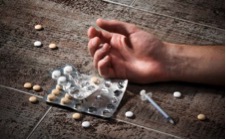
In summary, know your MBTI! Use this knowledge to help you respond to practice and life issues.
If you are depressed and become energized by solitude, beware of isolation and ask for help. Ask another dentist for help (“accountability partner or peer”) and remain engaged in your career and life. If one says, “That’s easier said than done”, remember, “Nothing changes if nothing changes”.
“…An estimated 300 to 400 physicians die annually from suicide…”
However, if you are an Intuitive (N) realize that you love change and new ideas but you must be cautious not to get overwhelmed with change. This may lead to avoidant actions that could be paralyzing.
Finally, if you notice that you are depressed/stressed and are using alcohol or other drugs for relief and balance, be aware that this could be a “red flag” that something is wrong. Process this information with your MBTI and look for possible reasons your life is out of balance and ask for help! There is a plethora of help and resources for you to utilize in order to turn your life around and begin living.
Summary
People that have a MBTI score of ISTJ, ISTP, ISFP, ESTJ, and ESFJ consistently appear in addiction.
People that have an ISTJ or ISFJ may possibly be predictive of substance abuse.

If you fall into one of these categories, that doesn’t mean you are an addict. Remember, MBTI is not a psychological test of dysfunction nor can it diagnose. However, it should be an indication that something is wrong and out of balance. Your body and actions are “speaking to you”. Listen, identify and accept that there is a problem, then ask for help!
Three resources to receive information and help that are easily available to all dentists include:
1. The American Dental Association (ADA) has excellent information at www.ada.org
under the Center for Professional Success/Live-Balance Your Life/Wellness. You
will find information on Mental, Physical, and Professional Health including stress,
depression, and addiction. This is an excellent resource for common issues we deal
with daily with solutions on how to confront them.
2. In the U. S., 47 states have State Dental Wellbeing Programs that are outstanding
sources for information on stress, depression, mental illness, substance use, abuse, and
dependence (addiction). You may also call the American Dental Association in
Chicago at (312)-440-2500 for information on your State Dental Well Being
Program.
3. Information concerning Well Being programs may be available from the Dental
Society in your state.

Dogs have it right! We need each other in life and dentistry to achieve our goals. We should all be the best we can be while helping and inspiring others along our journey in life.
The next section will discuss dentistry’s elephant in the room: BURNOUT!
